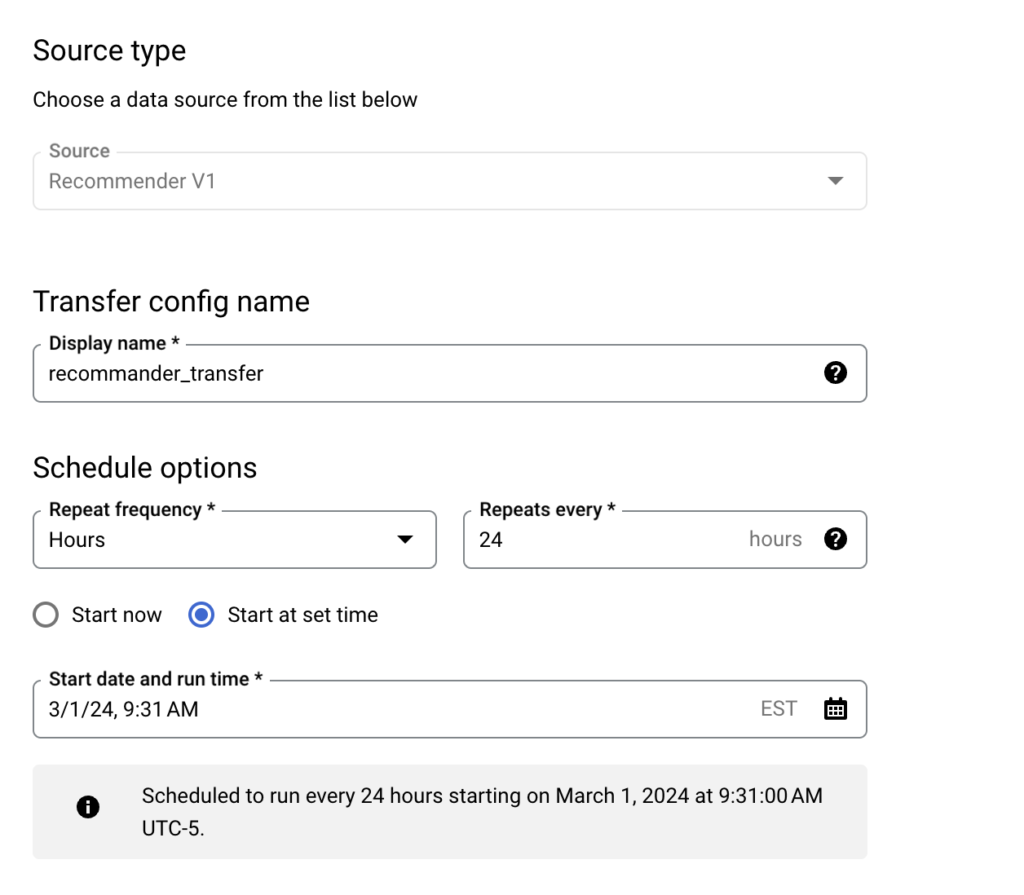In our ongoing exploration of cloud cost optimization, we’re constantly seeking ways to maximize efficiency and minimize expenditure. In our previous blog post, we discussed the importance of centralizing recommendations within BigQuery to streamline cost analysis. If you haven’t had the chance to read that article, I highly recommend doing so, as it lays the groundwork for the strategy we’re about to delve into.
Now, let’s dive into a powerful BigQuery query designed to uncover Compute Engine resources prime for scale down, further enhancing your cost optimization efforts.
Unveiling the Query
SELECT
r,
SPLIT(r, "/")[4] AS project_name,
ARRAY_REVERSE(SPLIT(r, "/"))[0] AS resource_name,
recommender_subtype as action,
description,
primary_impact.cost_projection.cost_in_local_currency. units AS cost_savings_per_month
FROM
<your_project>.recommendations.recommendations_export,
UNNEST(target_resources) r
WHERE
recommender_subtype = "CHANGE_MACHINE_TYPE"
AND TIMESTAMP_TRUNC(_PARTITIONTIME, DAY) = (
SELECT
TIMESTAMP_TRUNC(MAX(_PARTITIONTIME), DAY)
FROM
<your_project>.recommendations.recommendations_export)
Breaking Down the Query
- SELECT: The query selects essential fields like the resource and project names, recommendation action, description, and projected cost savings per month.
- FROM: It sources data from
recommendations.recommendations_export, extracting target resources usingUNNEST. - WHERE: Filters recommendations to focus solely on those advocating for changing machine types. Additionally, it ensures we’re working with the latest data partition.
What It Means for You
By running this query, you gain insights into Compute Engine resources where adjusting machine types could lead to substantial cost savings. Each recommendation is accompanied by a description and projected monthly savings, empowering you to make informed decisions about scaling down resources without sacrificing performance.
Conclusion
Cost optimization in the cloud isn’t just about cutting corners; it’s about strategic resource allocation. With the provided BigQuery query, identifying Compute Engine resources ripe for scale down becomes a streamlined process. Embrace data-driven decision-making to optimize your cloud costs effectively.
Stay tuned for more insights and tips on maximizing the value of your cloud investments!
Remember, when it comes to cloud cost optimization, every adjustment counts. Start uncovering opportunities for savings today with our BigQuery-powered approach. Your bottom line will thank you.
Would you like to dive deeper into any specific aspect or have further queries? Feel free to reach out!
Leave a Comment


